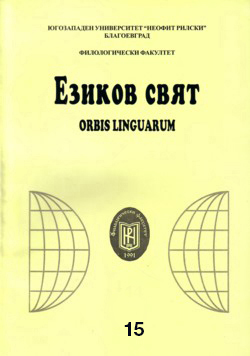
We kindly inform you that, as long as the subject affiliation of our 300.000+ articles is in progress, you might get unsufficient or no results on your third level or second level search. In this case, please broaden your search criteria.

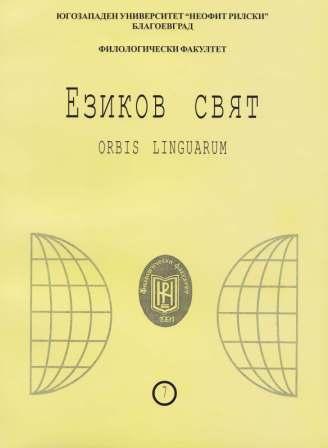
The research object of the present text are Bulgarian masculine personal nouns derived from Neo-Latin ones. The main aim is to present a complete list of them and their initial meaning as well. The excerpted examples are classified according to the type of the basic word, used during the process of name derivation, as a part of speech (i.e., if it is a proper name or an appellative (a common noun, an adjective, etc.)). An additional extralinguistic classification is made according to the canonization of the researched names, i.e., if it is a name of a saint, and, if the saint is canonized only by the Orthodox Church, by the Catholic one, or by the both of them.
More...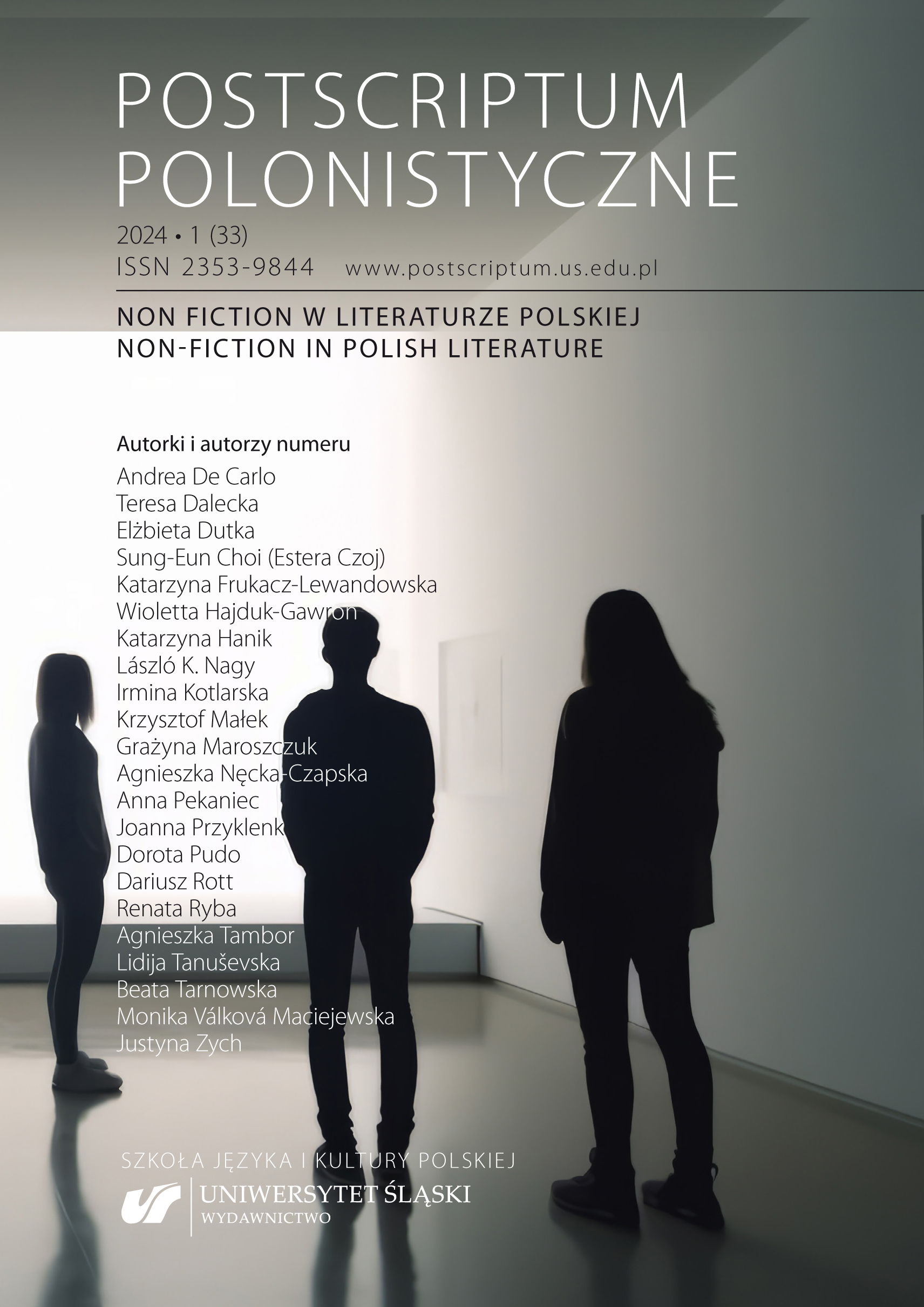
The main aim of the article is to briefly describe non-fiction literature in Lithuania which is heterogeneous. Popular reading titles are dominated by translations, including a few from Polish. In addition, non-fiction books by Lithuanian authors are published, as well as a small number of works by authors writing in Polish. Each of these phenomena was presented using a descriptive method, with greater attention paid to texts written in Polish. Each of these phenomena was presented using a descriptive method, with greater attention paid to texts written in Polish. Lithuanian non-fiction prose, created in both Lithuanian and Polish, revolves primarily around the theme of loss and transience. It is the result of the authors’ need to preserve on the pages of books the memories of a homeland in danger or lost, family, identity and language. In Polish non-fiction literature, represented mainly by Ryszard Kapuściński, Lithuanian readers are interested in the complex phenomenon of the 20th century – the mechanism of the existence and collapse of totalitarian systems, as well as the related psychological consequences suffered by the collective and individual people, and their transformation in a specific historical social space. Kapuściński’s observations on how history’s cataclysms change the lives of ordinary people and how the boundaries between attackers and victims blur. The small number of non-fiction prose items allows us to conclude that this literary genre is just making its way in Lithuania. However, its popularity among readers gives it a chance for rapid development in the near future.
More...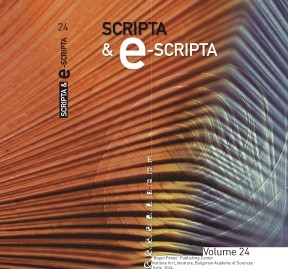
The described resource is an online tool, designed for studying texts and diachronic variation of language. The core of its corpus is represented by the Pop Punčov Sbornik, a West Bulgarian manuscript from 1796, released together with smaller examples of 14th–19th century Balkan Slavic varieties. Aside from the data, providing a unique view of historical dialects, it also provides a userfriendly interface and modular structure, thus allowing both easy additions of new content and features, as well as training of students and lay people interested in historical literature. The resource also contains extensive documentation concerning both grammar and philological data about the sources.
More...
The creation of a text in the Middle Ages was a process of superimposition of persistent patterns and ‘topos’ formulas that had acquired universal meaning. It is very difficult to point out a historical-apocalyptic text that consistently conveys the Greek original, without exception all translated works have the intervention of the Slavic scribe who amends, adds or abridges the text. This is a natural process, especially for this type of literature, which has no liturgical purpose, it is outside of following the canon and the liturgical statute. The main reason for the compilation nature of historicalapocalyptic literature is the desire to express and highlight the current local (in most cases – Bulgarian) point of view on the events that took place, to adapt the images of historical figures to the current reality.
More...
This paper is dedicated to a bilingual manuscript from the 1660s, conserved at the Library of the Romanian Academy as ms. rom. 312, which contains, between folios 217v and 254r, a copy of Meletius Smotrytsky’s Slavonic Grammar and its Romanian translation by Staico the Grammarian (who taught Slavonic in Târgoviște). The Romanian text, titled Tâlcuirea sau arătarea gramaticii slovenești („The Interpretation or the Expression of the Slavonic Grammar”), is on the pages opposite to the Slavonic text. The aim of this paper is to provide a preliminary comparison between this grammatical text and the first grammars of the Romanian language from the 18th century, namely the one penned by Dimitrie Eustatievici Brașoveanul in a manuscript from 1757 and the one published by Ianake Văcărescu in 1787. By comparing them, it is possible to illustrate the different mechanisms used to render the corresponding terminology for parts of speech and nominal cases, ranging from direct translations and calques to neologisms.
More...
Language barrier impedes team performance among employees working in a multilingual environment. Guided by the Technology Acceptance Model this study seeks; to determine the effect of machine translators on team efficiency, collaboration, trust building, and training among students on work-study jobs in Hungary. International students (N=105) from the University of Debrecen participated in the study. Findings indicate that machine translators significantly and positively contributed to team performance by boosting efficiency, collaboration, trust, and training. Every unit increase in use of Machine Translators translated to a corresponding increase in team efficiency, collaboration, trust, and training: a significant finding that indicates their instrumental role in breaking the language barrier in a linguistically diverse workplace. This study recommends the full adoption of machine translators to bridge the communication gap arising from language barriers in any multicultural environment consisting of multi-lingual team members.
More...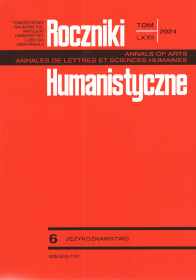
The article is devoted to the role of corpus data in monolingual and translational lexicography. Such data can significantly influence the construction of entries in monolingual and translational dictionaries, as demonstrated by the analysis of the Czech lexical unit klika. The analysis has shown the possibilities of describing the meaning of the unit using a monolingual corpus and indicating its foreign-language equivalents using a parallel corpus. The text can serve as a basis for further reflection on the creation of the lexical grid, the form of the dictionary entry and criteria for establishing translation pairs.
More...
This article discusses how online machine translators (OMT) can influence the way people use general language or languages. The latter distinction has to do with the fact that contemporary lifestyles turn language users into plurilingual communicators. Online shopping, travelling abroad or social media often require at least some degree of plurilingual text mediation skills. Irrespective of foreign language competences, a lot of plurilingual communicators seek OMT support in making sure their messaging with international partners is correct and effective. The article discusses research results concerning how a selected group of BA and MA students in education use machine translation for day-to-day plurilingual communication tasks. We asked them about the relation between machine translation, language learning and language use. We give some insight into the machine translation engine DeepL Translator, which can effectively be used in support of plurilingual text mediation. The article also contains basic educational implications for why and how to make OMT part of foreign language curricula.
More...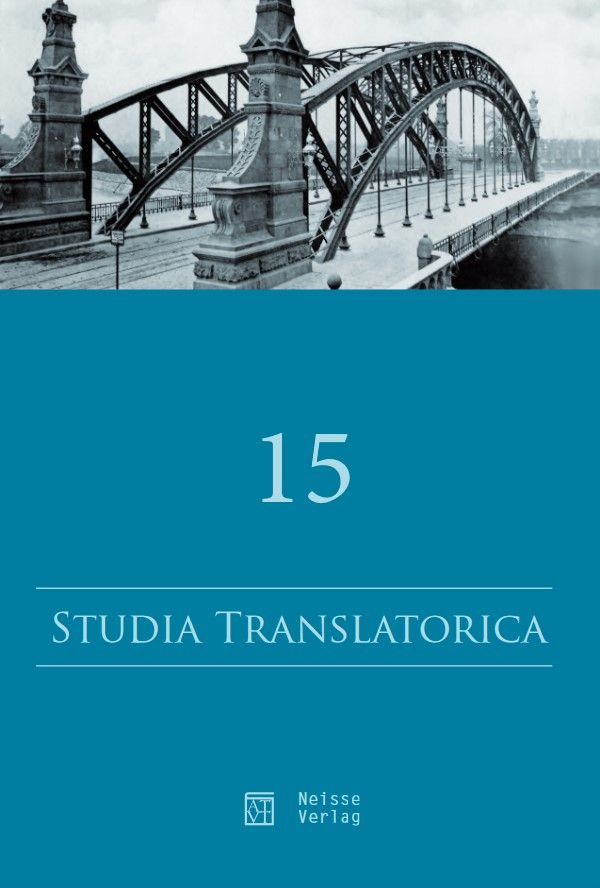
Despite the increase in scholarly articles and publications that focus on singable translations of vocal music texts, few tackle the relationships and interplay between the two main semiotic systems of words and music, nor how they may or may not be preserved in translation. The translator’s understanding of how meaning arises across semiotic resources, especially between music and words, is equally as important a criterion for decision making when translating a vocal music text as sense, naturalness, singability, rhythm and rhyme and deserves as much attention as any staging demands or the diverse requirements of cultural transfer. By means of demonstration, using examples from a translation of Mozart’s “Le nozze di Figaro” by Jeremy Sams, this study explores an approach to singable opera translation that focuses on the stylistic decisions of the composer when marrying verbal and non-verbal semiotic modes and how the translator preserves or alters their relationship, which in turn may affect their interpretation, especially by singers.
More...
Song lyrics function in James Joyce’s “Ulysses” like any other literary and cultural allusion. However, in the musical episode of “Ulysses”, “Sirens”, lyrics may function as music as well. In the episode, where songs are performed by characters and, de facto, by the narrative itself, musical allusions are evoked in the readers’ mind, enriching their experience of the episode. The following question may arise then: how can the Sirens’ songs be translated for a target reader who is not familiar with the music or words of the songs mentioned? Addressing foundational word and music studies research and recent research on the translation of musical texts, this article investigates how lyrics alluded to in “Sirens” perform a musical role in the episode. Through the study of the Italian and Finnish (re)translations of the episode, it examines the creative options for translators of song lyrics in musico-literary texts.
More...

This research looks into how well Project-Based Learning (PBL) helps Chinese higher vocational college students to learn and communicate in real life. The main research question looks into how PBL, which includes incorporating the real world, learner-centered approaches, working with Chinese higher vocational college students from different fields, real-world assessment, and ongoing reflection, affects students' oral communication, writing, critical thinking as well as intercultural communication abilities. Systematic literature review was done, looking at English-language peer-reviewed papers from databases like PubMed, ERIC, Google Scholar, and PsycINFO to find out what effects PBL has on practical communication skills. The review included parts of PBL, such as, speaking and writing, critical thinking, active listening, and intercultural communication. It led to a comprehensive understanding of the way it affects English education at the higher vocaitonal education level. The synthesized literature highlights the transformative influence of PBL on practical communication skills, emphasizing its role in fostering learner engagement, critical thinking, and adaptability in cross-cultural contexts. Oral communication, written expression, and interdisciplinary collaboration emerged as key domains positively influenced by PBL in the Chinese higher vocational education landscape.Teachers are advised to make using PBL methods a priority if they want to help Chinese higher vocational college students improve their speaking skills. This means creating a dynamic and collaborative learning space, encouraging collaboration across disciplines, and using real evaluations that are in line with learner-centered principles. The study shows how PBL can be used in the real world to help Chinese higher vocational college students improve their communication, critical thinking, and ability to work with people from other cultures. The results support the use of PBL along with successful professional development programs to adapt to the changing needs of the globalized professional world.
More...
This documentary research on the discourse in electronic media surrounding the teaching and learning of English as a foreign language on the Mexico’s border describes the social framework and analyses various linguistic contexts to make provisional recommendations regarding foreign language policy in Mexico. The digital journalism selected issues an opinion on (1) the teaching of English as a language additional to Spanish in Mexico (English Language Teaching, ELT), and (2) Mexico’s position (at Federal and State level) implicit in their regional implementation of ELT. Thirteen articles from 12 regional, national, and international media sources were analysed using Guespin and Marcellesi’s (1986) and Arnoux and Bein’s (2015) theories, alongside Bardin’s (1996) content analysis method for linguistic contexts in border regions. Qualitative analysis techniques were employed to identify and categorize the positions on foreign language policy presented in the Mexican media. The authors conclude with recommendations for ELT policy, proposing actions for foreign language policy planning. We argue for raised teacher-training standards to improve foreign language learning in mainstream education and Private language schools, thus positioning the Universidad Autónoma de Baja California to take more agency in our regional support role to the Mexican Secretariate of Education.
More...
This article examines some aspects of the comparison of English and French languages in the process of learning French as a second foreign language by students who are native speakers of the Ukrainian language who previously studied English. The group of students from whose practice examples of transferring knowledge from one language to another are taken are students of the «International Relations» and «International Information» training areas. The relevance of this topic is due to the fact that in the modern world, students’ knowledge of one foreign language is not enough for their future professional activities. At the same time, knowledge of a second foreign language must be thorough enough to meet the needs of communication in a professional environment. To date, there is little methodical literature on learning French as a second foreign language after English. The research methodology is based on comparative language analysis. This article examines specifi c cases where the involvement of the fi rst foreign language hinders or helps the eff ective learning of the second. The purpose of this study is to consider some aspects of the comparison when learning French as a second foreign language after English, to identify the most frequent errors associated with the infl uence of the fi rst foreign language, and also to propose methods of minimizing these errors. The object of the study is some aspects of the comparison of two languages, English and French, when studying French as a second foreign language, and common errors occurring at three linguistic levels are considered as a subject: grammatical, lexical and syntactic. Along with empirical studies, on the basis of which foreign authors conduct a detailed analysis of errors that occur, an important place is given to the review and analysis of existing theoretical approaches to the problem of learning and teaching the French language. Elements of novelty of the research focus on the interpretation of information and recommendations for reducing the negative infl uence of one language on another. Conclusion. Parallel study of two languages with the involvement of a comparative aspect is considered the most eff ective, but such study is impossible within the curriculum of students of nonnative universities. In this regard, the following solutions may be optimal to minimize errors: comparative analysis of the phenomena of two languages in the process of explaining grammatical rules and performing practical tasks; application of problem- solving technology during classes; situational and thematic organization of classes; fi nding a balance between the amount of oral and written material used in classroom classes; creating motivation and increasing interest in a foreign language.
More...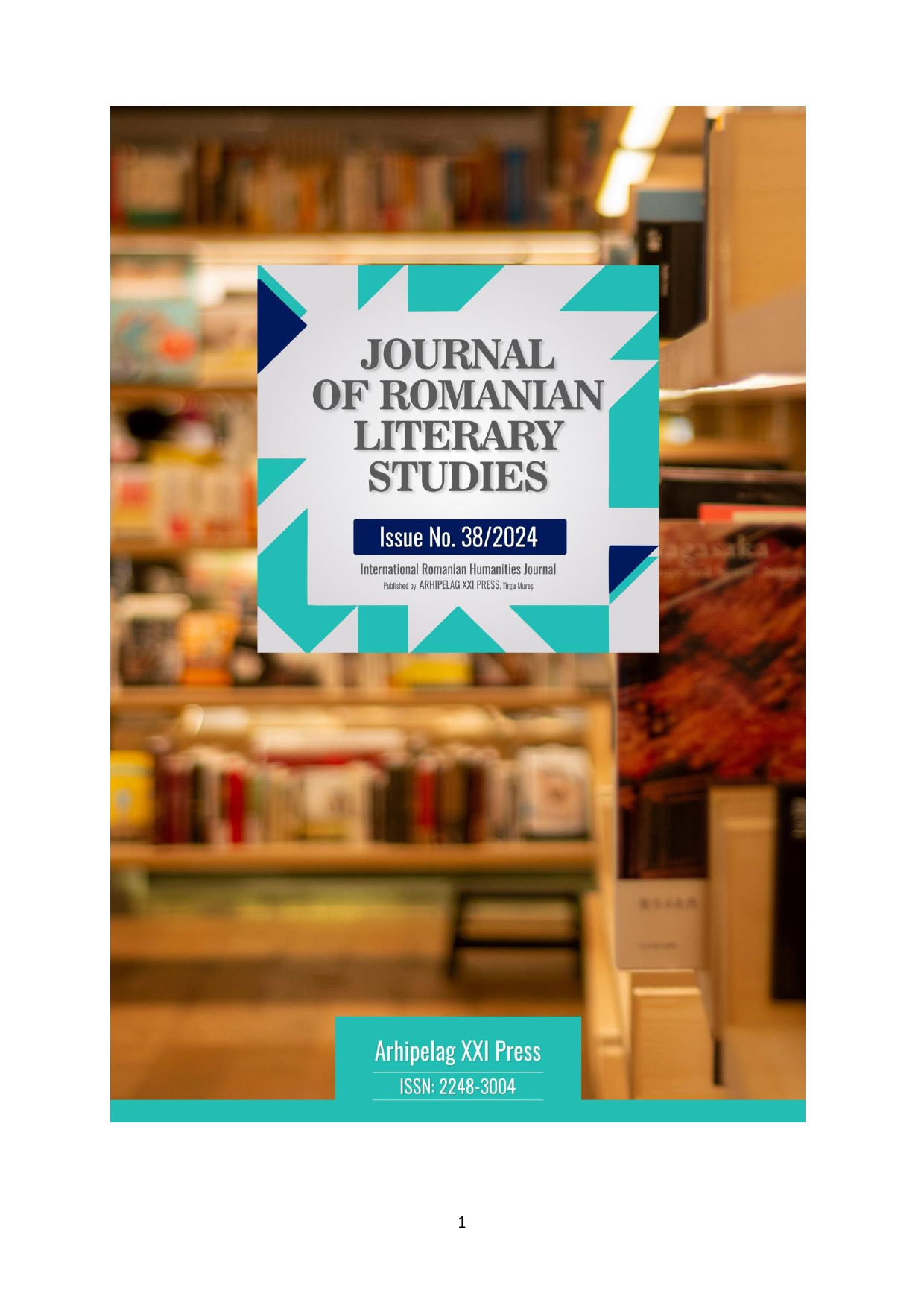
With the constant evolution of technology, all societies are experiencing an increase in access to information, as well as an increase in the demand for certain information to be made accessible in their native languages. However, as it is already known, from the works of academics such as Lefevere and Benjamin, translation is not a scientific, accurate practice. While specialised translation may benefit from the clear-cut, unquestionable use of language through the use of specific words in specific syntactic positions, fiction, with its metaphors and poetic use of language, does not observe the same objectivity and rigour in translation. As such, many translations are conducted by either observing a faithfulness to the words used in the original, or a faithfulness to the meaning behind the words used. As such, when we consider the latter method of translation, we are faced with works which oftentimes hardly resemble the source text. This matter is of vital importance when it comes to the translation of feminist texts which aim to instill a certain effect and response in the reader. The present paper aims to conduct a comparative analysis of the novel Nightbitch by Rachel Yoder and its Romanian translation produced for Editura Trei by Radu Șorop, with a special focus on the profanities used by the author and its translated counterparts, to attempt to illustrate the way in which feminist texts considered “uncouth” are stifled in the target language through euphemisms and censorship.
More...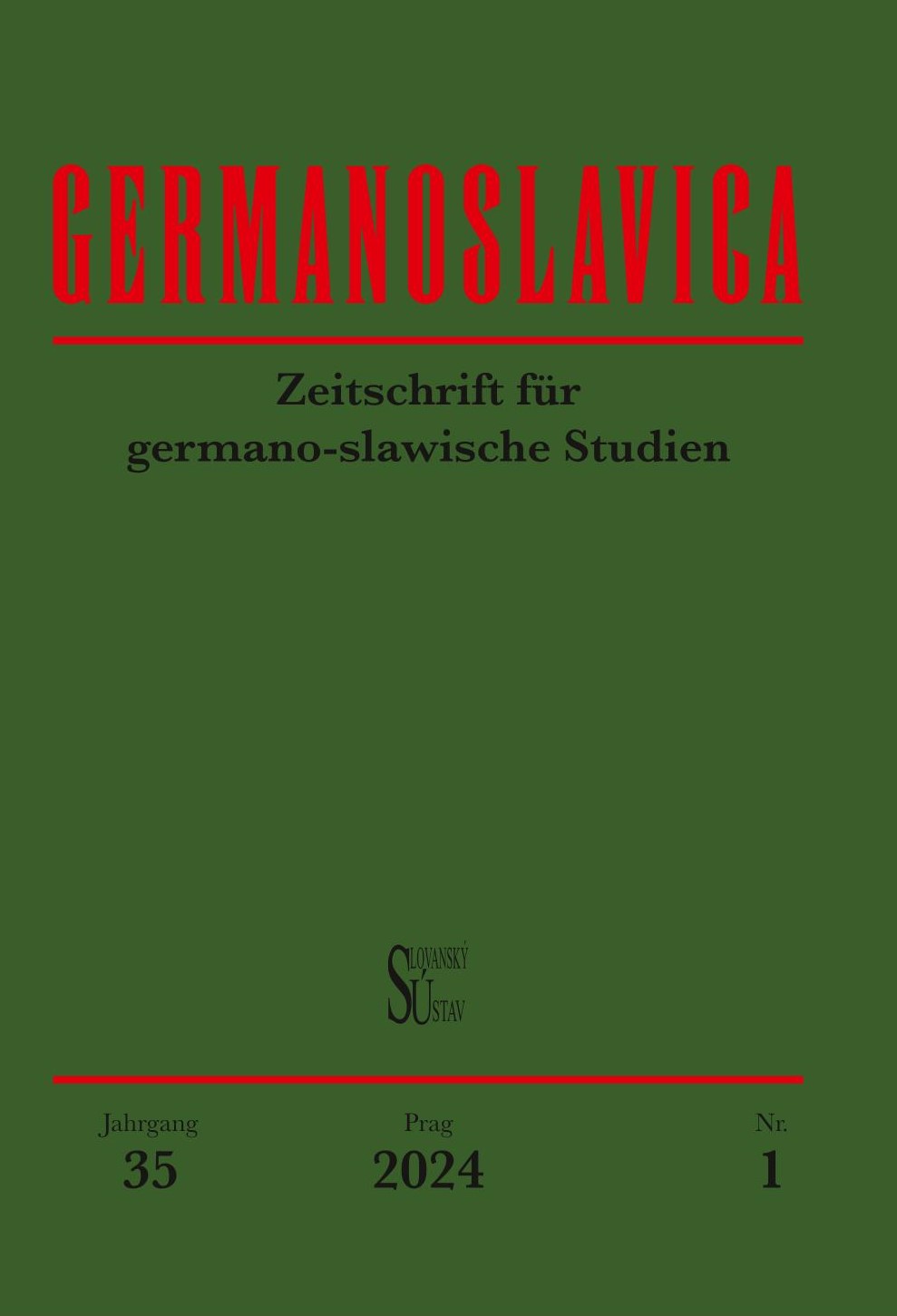
This article examines three Czech textbooks published by the teacher Jan Urban in the first half of the 19th century. These works are translations of German textbooks, but these templates are only partially known. The article identifies the German originals and contrasts them with Urban’s Czech translations in order to shed light on Urban’s adaptation strategy. It also reflects on the historical context of these German and Czech textbooks. The study thus contributes to research into German-Czech linguistic-cultural transfer during the period of Czech National Revival.
More...
This article examines three Czech textbooks published by the teacher Jan Urban in the first half of the 19th century. These works are translations of German textbooks, but these templates are only partially known. The article identifies the German originals and contrasts them with Urban’s Czech translations in order to shed light on Urban’s adaptation strategy. It also reflects on the historical context of these German and Czech textbooks. The study thus contributes to research into German-Czech linguistic-cultural transfer during the period of Czech National Revival.
More...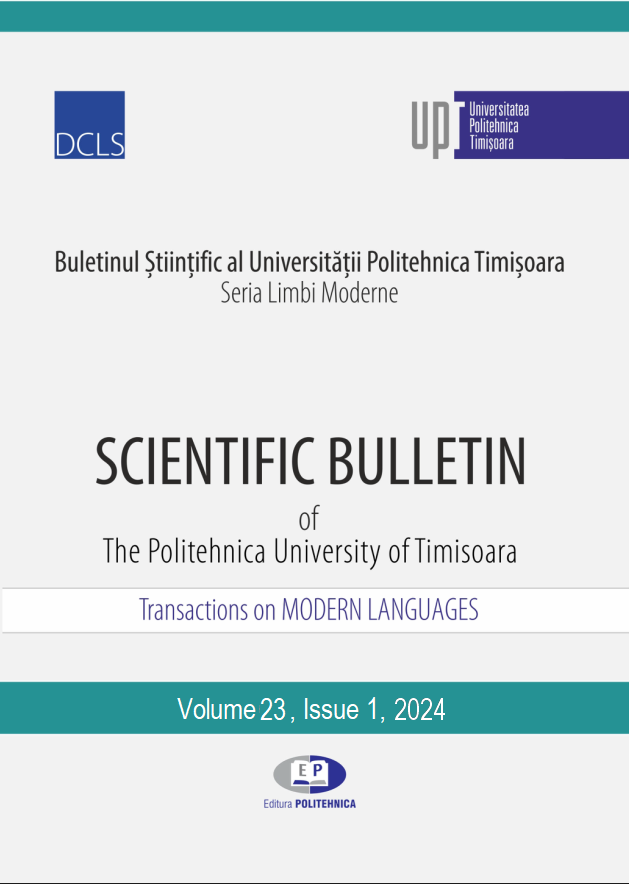
In EFL learning and teaching processes, mental translation might play an essential role in the mind of the foreign language learner. Some scholarly papers investigate the types of processing in the language learners’ mind such as language perception, language acquisition and dialogue production. Other studies, based on empirical psycholinguistic research about the process of mental translation, investigate mental translation strategies as well as the neuro-linguistic aspects of this process, including cognitive and brain imaging research. There is a consensus among researchers that using neurolinguistics knowledge, one can connect neurological processes in the language learners’ brain with the foreign language learning. This paper tries to contribute to existing studies in this field and highlight the importance of neuro-linguistic research in connection to the biological capacity of the human memory to make connections between language systems in the process of communicative language learning.
More...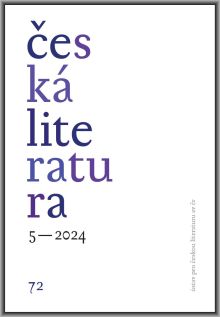
Review of: Merhautová, Lucie, ed. a Topor, Michal, ed. Nalezen v překladu: Emil Saudek (1876-1941). First edition. Praha: Institut pro studium literatury, 2022. 826 pages. ISBN 978-80-7657-022-1.
More...